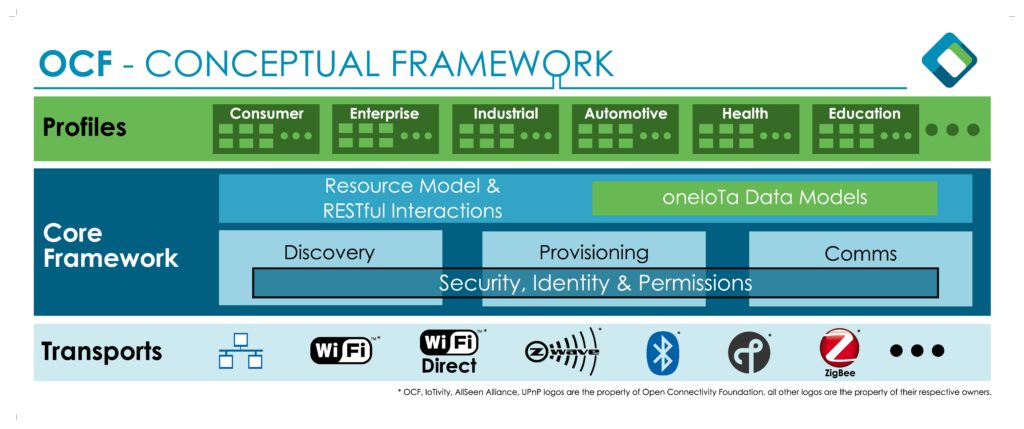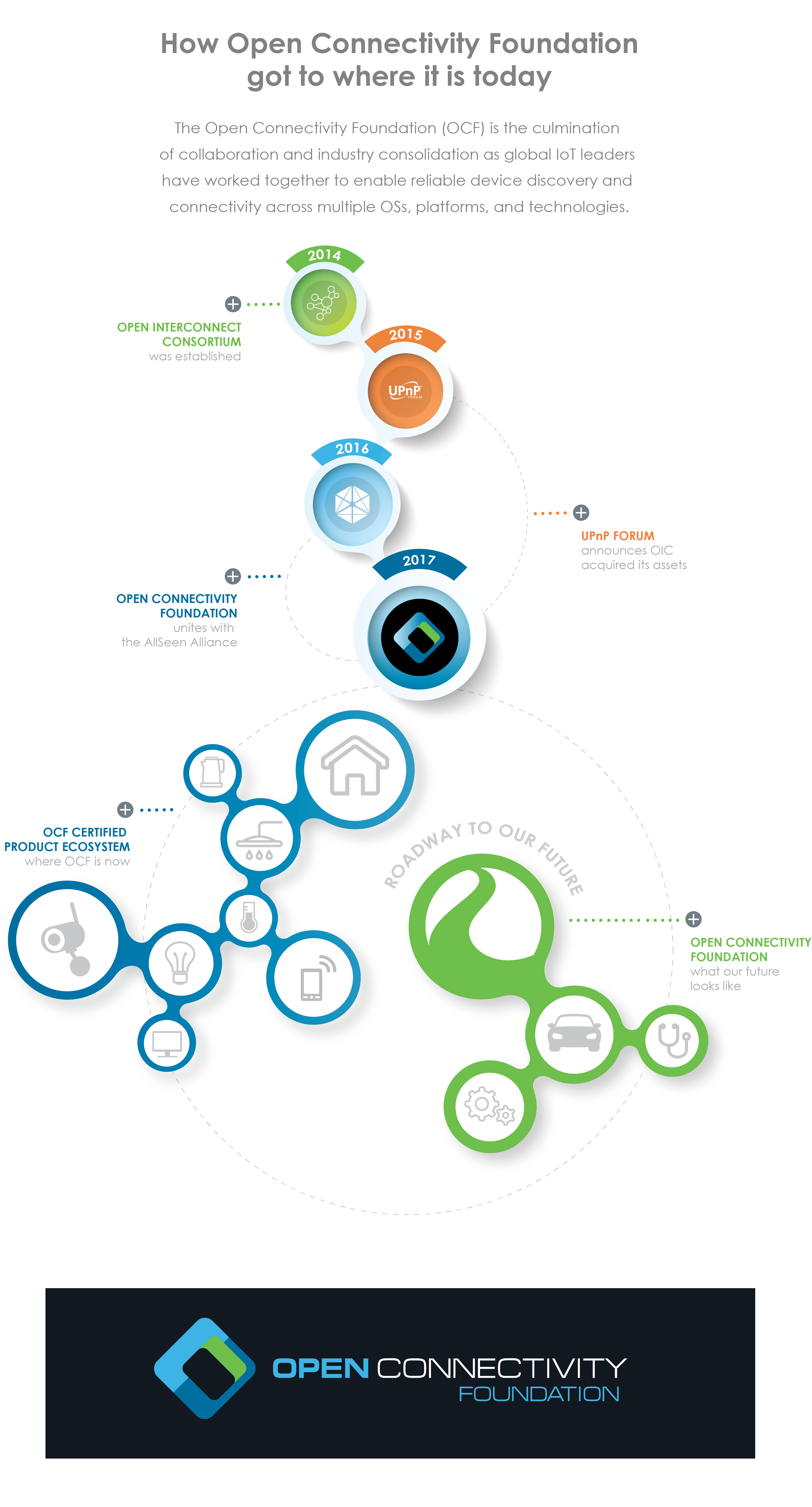Let’s Grow Your Business
Analysts predict there will be upwards of 25 billion devices on the Internet of Things by 2020. But for device manufacturers, the fragmentation of standards, especially the lack of a cohesive interoperability strategy, has hindered innovation opportunities to maximize interop and increase market share.
Benefits of Open Standards and Open Source
OCF’s Specifications are truly an open standard committed to broad scale interoperability. The Open Connectivity Foundation enables manufacturers to leverage all of the benefits of an open source, open standards community to quickly create and implement reliable, secure device discovery and connectivity across operating systems, platforms, transports, and vendors.

The IoTivity Open Source Project is an independent open source project hosted in GitHub, allowing manufacturers to design products and innovate new applications by utilizing the code and OCF Specifications, bypassing the need to develop to every physical transport or operating system in order to maximize interoperability and market size.

With nearly 15 liaison agreements with industry leading organizations, OCF works with industry groups encouraging them to share their data models for reuse. OCF's tooling encourages the design of interoperable device data models for IoT, enables users to create simple models for any IoT device (using Open API Specification (OAS2.0) and JSON) in a matter of minutes.
The easy-to-integrate architecture of IoTivity and the openness of OCF's data models enables manufacturers to convert these organizational liaisons into working interoperable implementations, lowering the overall cost of development.
Expand Across Devices and Industries
OCF Specifications allow manufacturers to drive interoperability across different devices and vertical uses, expanding their market opportunities by interconnecting with other IoT things. OCF interoperability further lowers manufacturer’s development costs by reducing the number of multiple SKUs of the same product that would be required to support multiple transports to meet differing industry needs.
To learn more about how OCF is enabling the Internet of Things by allowing your offerings to go beyond verticals, please click here.
OCF Bridging Framework
By developing to the OCF stack and utilizing OCF’s Bridging Framework, manufacturers are able to span multiple vertical industries and maximize their development investment to increase cross-market opportunities. Additionally, OCF bridging capabilities enable companies to fully integrate OCF certified products into proprietary and legacy solutions without losing their current investments. For more details view the OCF Bridging Specification here.
Serious IoT Security That is Easy to Implement
Because OCF Specifications include a common security framework to manage device to device communication, manufacturers can focus on increasing innovation and expanding their market share without worrying about adding additional security layers. End users can rest assured that OCF certified products maintain an exacting standard for secure interoperability and ease of management to address future security concerns and updates. To learn more about OCF Security Framework go here.





